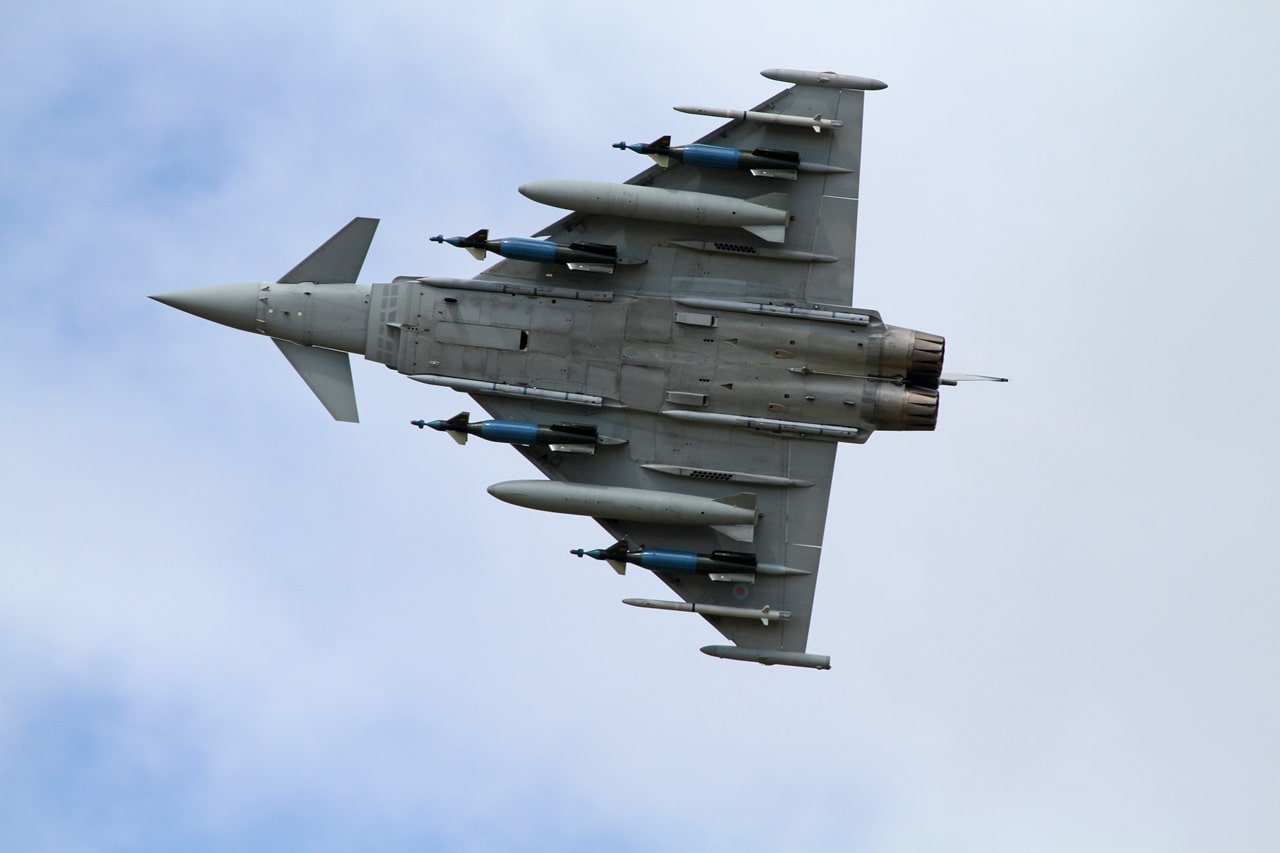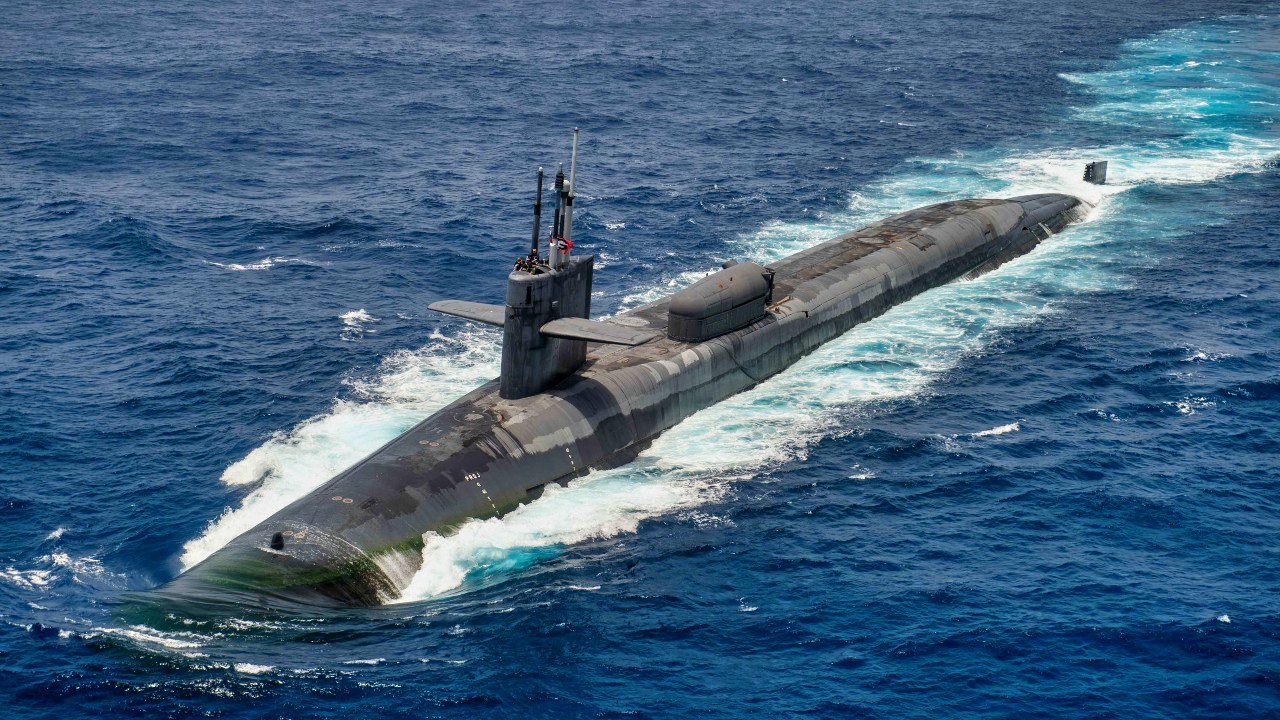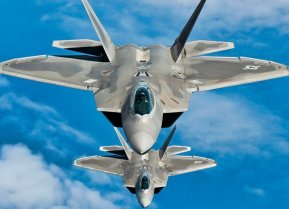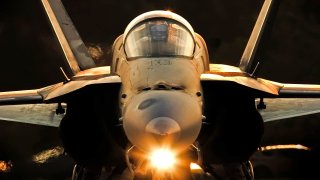Will the Strikes on the Houthis Make any Difference?
Decisive results against the Houthis seem fanciful, barring an amphibious offensive, an unappealing if not unthinkable option for coalition magnates.
What would Admiral J. C. Wylie say about yesterday’s air and missile strikes against Yemen’s Houthis?
In all likelihood, the author of Military Strategy: A General Theory of Power Control, a fixture in the strategic canon, would be a confirmed skeptic that the strikes will accomplish anything decisive against the rebels.
For Wylie, the goal of military strategy is control—chiefly control of physical space. And he maintains that it takes soldiers or marines on the ground, not aviators or seaborne rocketeers, to seize control of physical space. He proclaims that, in the end, “the man on the scene with a gun” is the arbiter of victory. The soldier toting superior firepower determines who wins.
So decisive results against the Houthis seem fanciful, barring an amphibious offensive, an unappealing if not unthinkable option for coalition magnates. Hence Wylie’s likely skepticism toward the venture were he among the quick today.
What did the coalition leadership intend yesterday’s strikes to accomplish? According to Secretary of Defense Lloyd Austin, the strikes will “disrupt and degrade the Houthis’ capabilities to endanger mariners and threaten global trade in one of the world’s most critical waterways. Today’s coalition action sends a clear message to the Houthis that they will bear further costs if they do not end their illegal attacks.” The key phrases being disrupt and degrade, clear message, and further costs.
And what Secretary Austin says makes sense on its face. Martial sage Carl von Clausewitz contends that there are three ways to prevail over an antagonist on the battlefield. Imposing unbearable costs is one of them. A rational foe ought to capitulate if convinced it can’t afford to achieve its military goals, or if it doesn’t care enough about its goals to pay the necessary price. Degrade its warmaking capacity enough and its leadership ought to give in. Austin seems to bestride solid ground from a Clausewitzian standpoint.
Nevertheless, Admiral Wylie would probably take issue with this approach. That’s because Wylie classifies aerial bombardment as a “cumulative” operation, in stark contrast to “sequential” operations. Sequential operations are operations in the conventional linear sense. Such a campaign is made up of tactical engagements undertaken in sequence. Each engagement depends on what happened in the last and shapes the next engagement in the series. And on and on until a force reaches its final goal or the enemy confounds the strategy. You can chart sequential operations on a map or nautical chart using continuous lines or curves pointing toward the final objective.

A vector is the proper metaphor for sequential operations.
Not so with cumulative operations. They’re made up of many individual engagements unconnected to one another in time or space. Each action is independent from the others. A cumulative strategy grinds down an opponent, inflicting small-scale damage at many places on the map, rather than pummel it constantly until it capitulates or no longer has the wherewithal to resist. In other words, this is a scattershot approach to combat. Plot the results on a map or chart and it looks like you’ve splattered paint all over the place.
The paintsplatter is the proper metaphor for cumulative operations.
Naval warfare—submarine operations and surface raiding in particular—is cumulative in nature for Wylie. So is insurgent and counterinsurgent warfare. And so is air and missile warfare. He counsels bombardiers that the ability to destroy things on the ground from the air is not the same thing as taking control of them. And without control there is no military victory.
Now, Wylie doesn’t condemn cumulative operations. Far from it. He depicts them as a valuable—sometimes invaluable—adjunct to an overarching military strategy premised on sequential operations. Wearing down an opponent through pinpricks is a difference-maker in combat, bolstering the likelihood that sequential offensives will attain their goals against a weary foe. Yet he regards it as intrinsically indecisive as a standalone strategy. Ergo, he would doubt the efficacy of yesterday’s actions unless the Red Sea coalition mounts an amphibious offensive—a sequential mode of operations that could yield decisive results if astutely conceived and executed.
And it’s doubtful in the extreme that the Red Sea coalition will go ashore in force. That would amount to strategic indiscipline at a time when the United States, its allies, and its partners need to husband their resources for theaters of paramount importance, mainly in East Asia. It’s improbable a campaign from air and sea meant to disrupt and degrade Houthi operations will subdue the militants. But that’s the lone feasible and acceptable option before the coalition.

All of that being said, if coalition leaders want to boost their prospects of success without going ashore, here’s how they should do it. They should go big, applying maximum violence at many key places on the map at the same time, and they should keep up the pressure over a sustained period of time. In so doing they can amplify the shock effect from an air and missile offensive, not to mention the destruction of enemy arms, support infrastructure, and logistics. Again, bombardment from aloft constitutes a dispersed and thus indecisive form of warfare. But concentrating many attacks in time and maintaining constant pressure could conceivably dissuade Houthi leaders from launching fresh attacks on Red Sea shipping.
Concentrating intense force in time while dispersing in space is the closest a cumulative strategy can come to matching the material and psychological effects delivered by a sequential offensive. Again, though, the odds are stacked against success.
As far as sending a message to the Houthis, they seem indifferent to rational cost-benefit calculations in the Clausewitzian mold. Nor do they seem deterrable, for that matter. These are ideologues, not dispassionate accountants of costs, benefits, and risks. Nor, evidently, do they have the sole say in strategy vis-à-vis Israel and its Western backers. The Islamic Republic of Iran is the Houthis’ behind-the-scenes patron, running weapons and other support to Yemen covertly by sea. Indeed, it’s far from inconceivable that Tehran instigated the Houthi onslaught as a way of striking indirectly at Israel and the West, not to mention at Arab neighbors that defy its claims to regional suzerainty.
So the future holds the possibility of horizontal escalation of fighting on the map as well as vertical escalation to greater violence should Iran come to the aid of its client. The situation bears close scrutiny, needless to say. Projecting what might happen represents the beginning of wise counterstrategy and operational design. Now as always in martial enterprises, foresight is at a premium if also elusive.
And, Wylie might add, coalition overseers must understand, accept, and work around the limits of the offshore approach.
Stay tuned.
About the Author: Dr. James Holmes
Dr. James Holmes is J. C. Wylie Chair of Maritime Strategy at the Naval War College and a Distinguished Fellow at the Brute Krulak Center for Innovation & Future Warfare, Marine Corps University. The views voiced here are his alone.
All images are Creative Commons.


